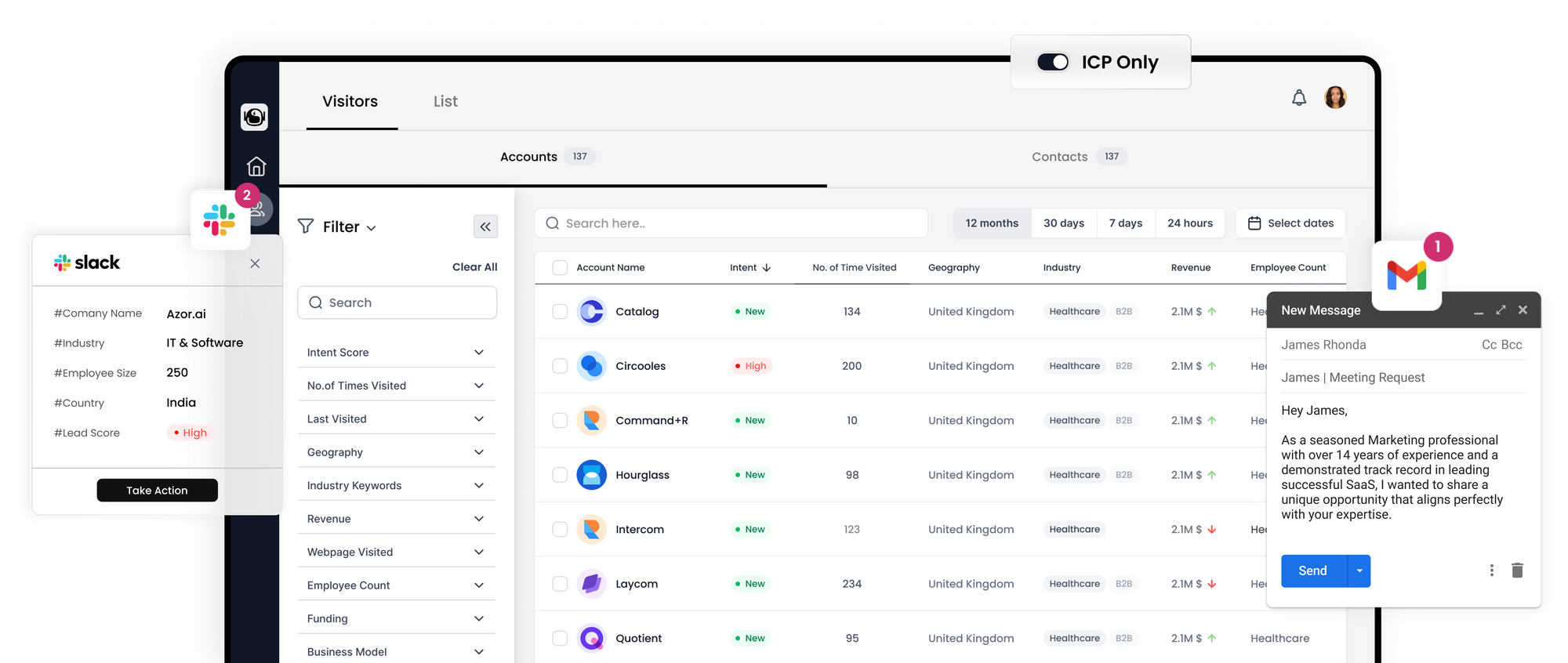Account-Based Marketing vs Traditional Marketing: Understanding the distinctions

In the expansive realm of digital marketing, discerning the nuances between account-based marketing (ABM) and traditional marketing strategies is crucial for marketers and business owners plotting their promotional courses. While both aim to capture potential customers' interest, they diverge significantly in execution and focus.

Account-Based Marketing Defined
ABM stands out as a strategic approach tailored to engage a select roster of high-value accounts with customized marketing maneuvers, as opposed to casting a wide net to a general audience. It's especially prevalent in the B2B domain, where it meticulously caters to each targeted account's specific requirements and decision-making journey.
Traditional Marketing Defined
Conversely, traditional marketing encompasses established promotional methods such as print ads, broadcasting, direct mail, and large-scale events. It's characterized by its wide-reaching capabilities, one-directional messaging, and interruption-based tactics that aim to broadcast a uniform message to a broad audience.
Key Contrasts Between ABM and Traditional Marketing
The crux of the difference lies in the granularity of targeting and personalization:
Focus:
Traditional marketing aims to blanket as wide an audience as possible, while ABM zeroes in on meticulously selected accounts.
Customization:
ABM thrives on creating bespoke campaigns that resonate deeply with targeted accounts, unlike the generic appeal of traditional marketing.
Measurement:
The success of ABM is gauged through specific account engagement and sales metrics, whereas traditional marketing looks at broader reach and brand awareness indicators.
Collaboration:
ABM necessitates a synergistic effort between sales and marketing teams to tailor campaigns that resonate with each target account, a step beyond the typically marketing-centric approach of traditional campaigns.
In summary, ABM offers a laser-focused, highly personalized marketing strategy designed to convert particular high-value accounts, setting it apart from the broad-spectrum, mass-appeal nature of traditional marketing efforts.
Benefits of account-based marketing for B2B enterprises
ABM is a specialized marketing strategy that zeroes in on designated customer profiles or individual business accounts. Commonly leveraged by B2B entities aiming to captivate and cultivate relationships with particular prospects, ABM brings several strategic advantages:
Resource optimization: ABM directs marketing energies toward selected accounts with higher conversion potential, thereby optimizing resource utilization and bolstering marketing investment returns.
Customized engagement: ABM's account-centric approach empowers organizations to devise marketing initiatives deeply attuned to the unique needs and preferences of each account, fostering more meaningful engagement and relationship-building.
Heightened ROI potential: Targeting key accounts inclined to make significant purchases, ABM is poised to outperform broader marketing tactics, delivering amplified returns on marketing spend.
Sales synergy: ABM fosters a harmonious alliance between sales and marketing teams, concentrating on chosen accounts and equipping sales personnel with the insights and tools crucial for effective outreach.
Superior customer journeys: The account-specific, tailored campaigns inherent in ABM enhance overall customer experiences, thereby bolstering brand perception and customer satisfaction.
Benefits of employing traditional marketing strategies
Traditional marketing encompasses tried-and-tested promotional tactics such as outdoor billboards, print media advertisements, broadcast ads on TV and radio, and direct mail campaigns. Below are some benefits of using traditional marketing methods:
Extensive Exposure: Traditional marketing channels typically have the capacity to reach a broad audience, allowing a single advertisement to be exposed to a vast number of people simultaneously, like a nationwide television ad aired during prime time.
Established Trust: The long-standing nature of traditional marketing often carries a sense of reliability and trustworthiness. For instance, consumers may have a higher level of trust for a brand they've consistently seen advertised in reputable magazines or on well-known TV channels.
Messaging Control: Traditional marketing offers brands complete control over the content and presentation of their advertising message. This level of control can ensure that the message aligns perfectly with the company's brand image and values.
Demographic Targeting: These marketing methods can be finely tuned to target specific demographics, using criteria such as age, location, or interests. For instance, a toy company can target family-friendly TV channels or a luxury car brand can advertise in high-end lifestyle magazines.
Physical Engagement: With traditional marketing, potential customers receive physical items they can touch and feel, like brochures or sample products via direct mail. This tangible aspect can leave a more enduring impression and aid in brand recall.
Appropriate Situations for Implementing Account-Based Marketing (ABM)
ABM is a highly focused business strategy where a company's marketing resources are directed towards engaging a particular set of target accounts. This approach is well-suited for B2B companies that want to deliver personalized marketing campaigns to specific potential or existing customers. Here are scenarios where ABM is particularly beneficial:
- For targeting a select group of high-value accounts: ABM is ideal when the focus is on nurturing a few high-potential accounts that could significantly impact revenue.
- When offering niche or complex solutions: For specialized or intricate products and services, ABM allows for detailed, account-specific educational marketing that can clearly communicate the unique value proposition.
- In cases of extended sales cycles: With longer sales processes, ABM enables sustained engagement and nurturing of leads, fostering deeper relationships over time.
- To boost retention and deepen customer loyalty: ABM strategies can also be tailored towards current customers to reinforce relationships and encourage ongoing commitment to your services or products.
Optimal Circumstances for Utilizing Traditional Marketing
Traditional marketing involves established, non-digital communication channels and is characterized by broader outreach methods like TV and radio ads, print media, direct mail, and billboards. Traditional marketing can be particularly effective in these situations:
- Targeting a demographic specific audience: For reaching particular age groups or communities, traditional marketing can be precisely aimed through appropriate channels.
- Enhancing brand recognition: These methods can significantly boost brand visibility and can be particularly effective when combined with digital strategies.
- Supporting digital campaigns: Traditional marketing can act as a supportive tool for digital campaigns, providing additional touchpoints for consumers.
- Addressing distinct marketing objectives: Traditional marketing can be geared towards achieving specific targets such as lead generation or immediate sales boosts through tailored promotions or offers.
While traditional marketing remains a valuable tool, it's crucial to weigh the specific objectives, the intended audience, and the potential effectiveness of these strategies against modern, digital tactics to determine the best approach for any given campaign.
Integrating Account-Based Marketing with Traditional Tactics
Account-Based Marketing (ABM) is a strategic approach that concentrates marketing resources on a defined set of target accounts, delivering personalized campaigns crafted for each. This stands in contrast to traditional marketing, which uses broader strategies to reach wide audiences through channels like print, broadcast, and mass digital communications.
To synergize ABM with traditional marketing techniques, one can employ various methods depending on the company's specific goals and the nature of the target accounts. For instance, leveraging mass-reach traditional tactics can spark interest among potential accounts, which ABM strategies can then cultivate into deeper engagement and conversion. By blending the bespoke nature of ABM with the expansive outreach of traditional methods, such as leveraging broader advertising campaigns to funnel leads to tailored landing pages, businesses can maximize their marketing impact.
Examples of Effective Account-Based Marketing
Some exemplary ABM campaigns include:
1. **Personalized Email Outreach**: Tailoring email content to address the specific needs and interests of a key account, enhancing engagement and conversion likelihood.
2. **Custom Landing Pages**: Developing web pages with content specifically designed for an individual account, improving relevance and conversion rates.
3. **Targeted Direct Mail**: Delivering customized physical mail to key decision-makers within an account, making a memorable and personalized impact.
4. **Custom Demonstrations**: Providing tailored product or service demonstrations to address the unique challenges of an account, showcasing direct value.
5. **Exclusive Events and Webinars**: Hosting invite-only events for key accounts, creating an exclusive and personalized experience that can foster stronger relationships.
6. **Focused Social Media Campaigns**: Utilizing platforms like LinkedIn to deliver content directly to individuals within a target account, utilizing precise targeting capabilities.
Successful Traditional Marketing Campaigns
Examples of traditional marketing that have achieved significant impact include:
1. **Coca-Cola’s Personalized Campaigns**: Customizing product labels to include popular names, fostering a personal connection with consumers and encouraging social media sharing.
2. **Nike’s Motivational Messaging**: Using universally relatable slogans like "Just Do It" to inspire a wide audience to action, associated with aspirational imagery and narratives.
3. **Apple’s "Think Different" Approach**: Positioning the brand as a champion of innovation and creativity through a campaign celebrating historical figures known for their unique contributions to society.
4. **Old Spice’s Humor and Charm**: Engaging audiences with witty, humorous ads that refresh the brand image and resonate widely across various consumer demographics.
5. **McDonald’s Consistent Branding**: Maintaining a long-standing slogan that emphasizes a positive, feel-good experience, contributing to brand recognition and customer loyalty.
Your Turn to Implement Account-Based Marketing
ABM requires a nuanced, highly focused strategy aimed at specific businesses, whereas traditional marketing casts a wider net to engage potential customers from the general populace. ABM excels in personalization, aligning sales and marketing strategies for targeted accounts, and often delivers more measurable and data-driven results than traditional methods.
It’s crucial for marketers to assess their campaigns’ performance and adjust strategies based on real-time data, moving beyond a one-size-fits-all mindset. By understanding and implementing ABM, companies position themselves to cultivate meaningful relationships with high-value accounts and achieve sustainable revenue growth.
